As you push your trolley round Sainsbury’s, have you ever wondered what went on there before the supermarket and nearby car showrooms were built? The photographs below (courtesy of Historic England’s Britain from Above project) show the area on 1 November 1938. The houses to the north, west and south east had been built over the previous decade or so but there was still open country to the east. On the extreme right of both photos, you can see Heaton Cemetery.
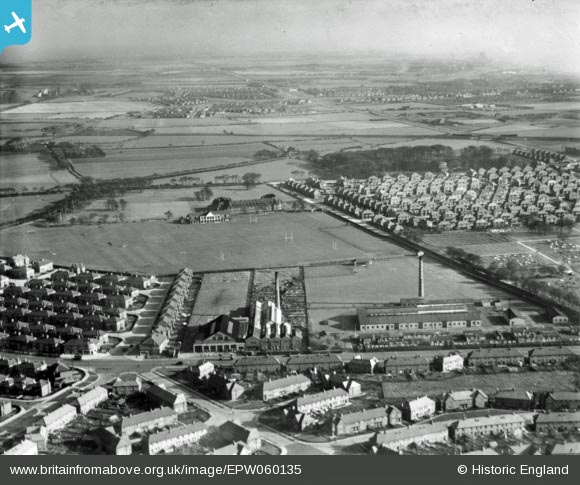
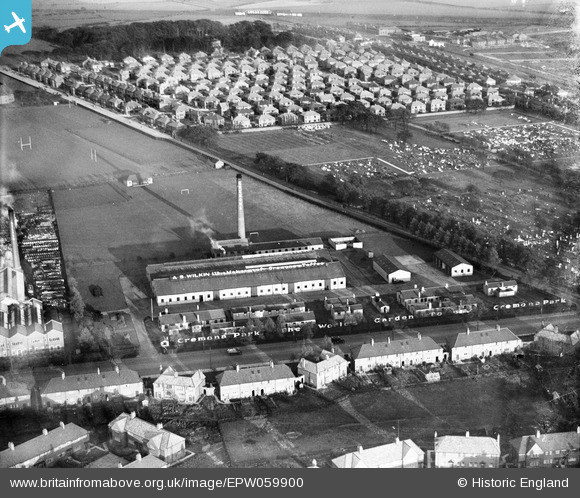
Cremona Park, the self-styled ‘ World’s Garden Toffery’ opened on what was then a green field site on Benton Road in 1920. It was founded by Albert Scholick Wilkin, the son of a Westmorland policeman. Wilkin had opened a sweet factory in Sunderland in 1908. It was an immediate success, especially its ‘Wilkin’s Red Boy Toffee’, which featured a detail from Thomas Lawrence’s famous painting, ‘Charles William Lambton’, later known as ‘Red Boy’. By the end of WW1, Cremona had become a national brand.

At about the same time, the old Royal Flying Corps site in High Heaton, Newcastle was no longer needed by the military. It gave Wilkin the space he needed to expand his business. There were many new flavours of toffee in ever more beautiful tins.
In 1939, Albert received a knighthood for ‘political and public services in Newcastle upon Tyne’. He was a Justice of the Peace, Chairman of Newcastle Central Conservative Association, governor of King’s College (now Newcastle University), an honorary freeman of the City of London and a Liveryman of the Feltmakers Company. During the war, he served on committees which oversaw the regulation of the confectionery industry. But in 1943, aged only 60, Albert Wilkin died.
Sons, Gordon and Frank, took over the running of the company and after the war, the export markets returned: Hong Kong, China, Syria, Gibraltar, South Vietnam, Puerto Rico, the West Indies, the USA, among others, all loved High Heaton toffee. But, by the 1960s, larger companies began to dominate and Cremona Park had become part of Rowntrees Mackintosh and soon afterwards, the Benton Road factory closed its doors forever.
Home
Veronica Halliwell (nee Erskine) has vivid memories of Cremona Park in the 1940s. Living what must be every child’s dream, she grew up in the grounds of a toffee factory.
Let Veronica take up the story: ‘I was born in 1940 and lived with my mother and grandparents at ‘The Lodge’, Cremona Park, Benton Rd. Newcastle upon Tyne until I was 8 years old.’
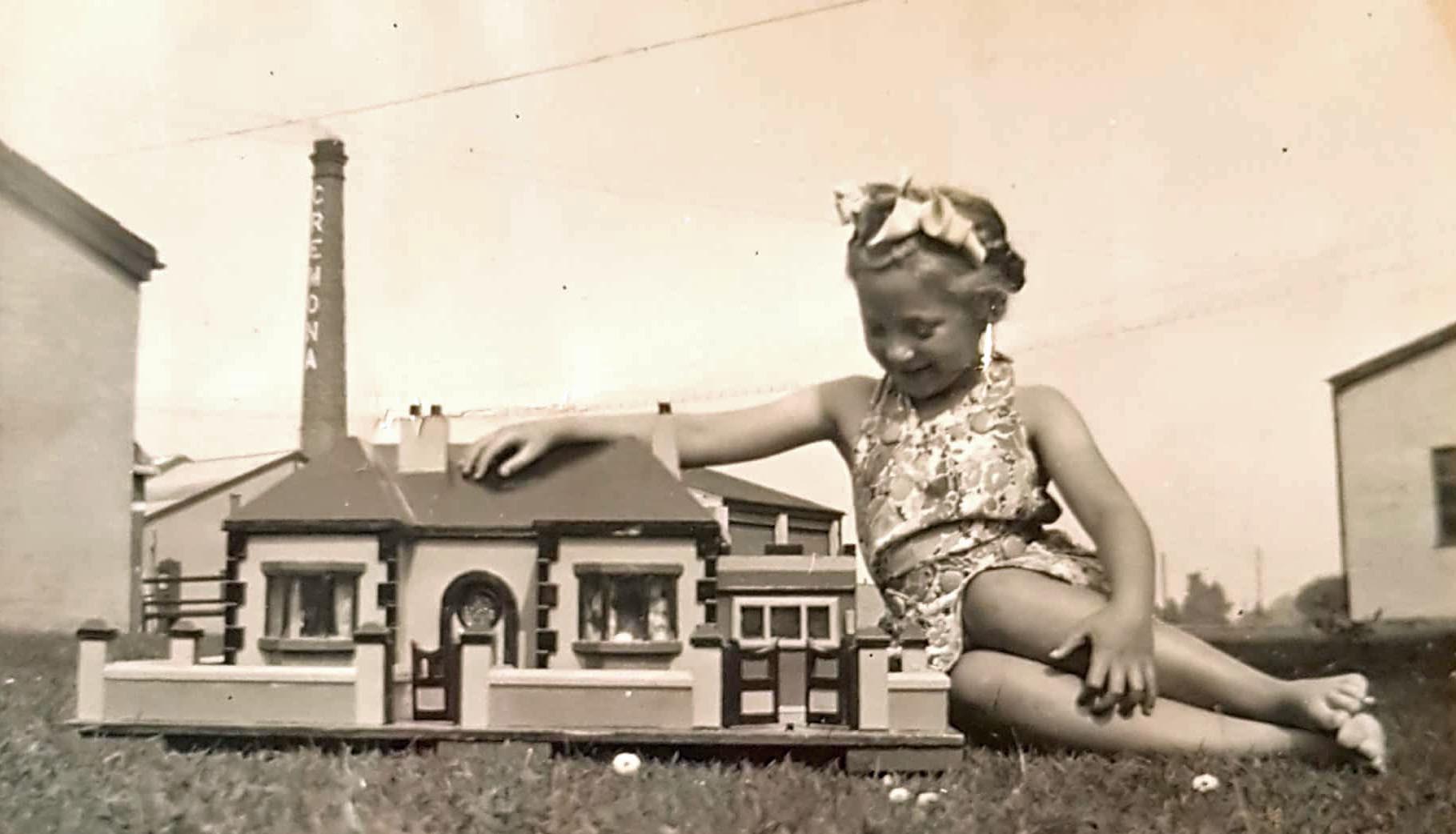

‘My grandfather was a commissionaire who checked transport at the gate of Cremona Park. He was also the office cleaner and a fire warden. My mother also worked in the factory – on the sweet machines. Meanwhile my father was a soldier on active duty with the Royal Northumberland Fusiliers. My grandmother looked after me. I have many very happy memories of this time.’
Grandad
‘Grandad had a very smart uniform with brass buttons which, as a child, I loved to polish with him. I had a toothbrush to collect the dampened solid block of brass polish and we polished it off when dry with a small duster at the dinner table in front of the black-leaded fireplace which always had a kettle on the boil.’

‘When we had finished and the buttons were gleaming, grandad would toast me some bread on a long handled fork over the open fire. Then the tin bath would be placed in front of this fire and Grandad would have his weekly bath!
Now and again I was allowed to go to the offices while Grandad did his cleaning chores. With hindsight, the high, wooden desks were quite Dickensian in appearance with high stools which I couldn’t reach! I used to play with the black telephones (probably Bakelite) and my Grandad lifted me up and I pretended to ‘clock-in’ at a very large ornate office clock.
The Boss’s office was a different affair altogether with a green leather top, silver ink pots and a wonderful green leather chair which I could swivel away in to my heart’s content. One day, the boss appeared and I am told that he was delighted with me. So much so that for Xmas 1945 or ’46 he gave me my first hard-backed book, ‘The Little Fir-Tree’. It gave me such pleasure that to this day, 70 plus years on , I still retell the story to all manner of children at Christmastime, even though the book has disappeared in the sands of time.
The fire wardens met in the canteen when they were ‘on duty’ but they never seemed to put out any fires, they just played cards and dominoes while I had a few rides on the ’dumb waiter’ as a reward for singing ‘You are my Sunshine.’ No health and safety rules and regulations then!’
Sweet machine
‘I can remember being carried into the factory to see my ‘mam’ at her sweet machine. The jewelled coloured wrapping paper seemed magical, as sweets slid down a chute at an alarming rate. When all the machines had shut down for the day I can still recall the hot, clean smell as the thick wooden slabs where the toffee was rolled were sluiced down with boiling water.’
We are lucky enough to have copies of postcards which show what the factory looked like inside, at every stage of the production process. They are undated but the first image suggests they were taken soon after the factory opened in 1920. So before Veronica’s time but perhaps not her grandad’s.
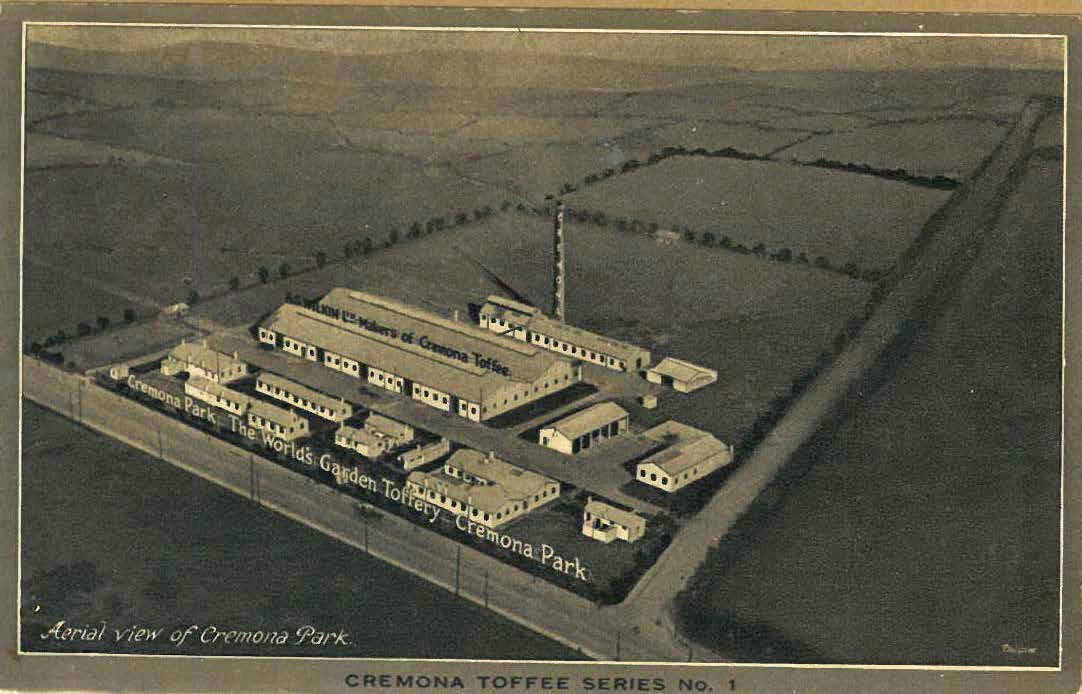
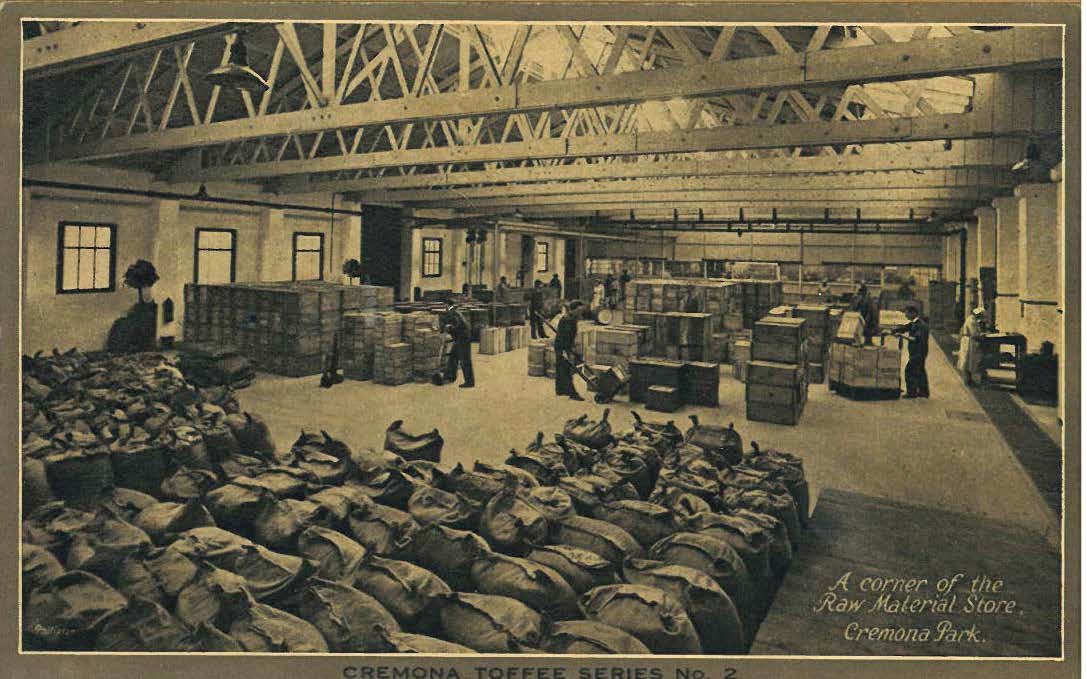
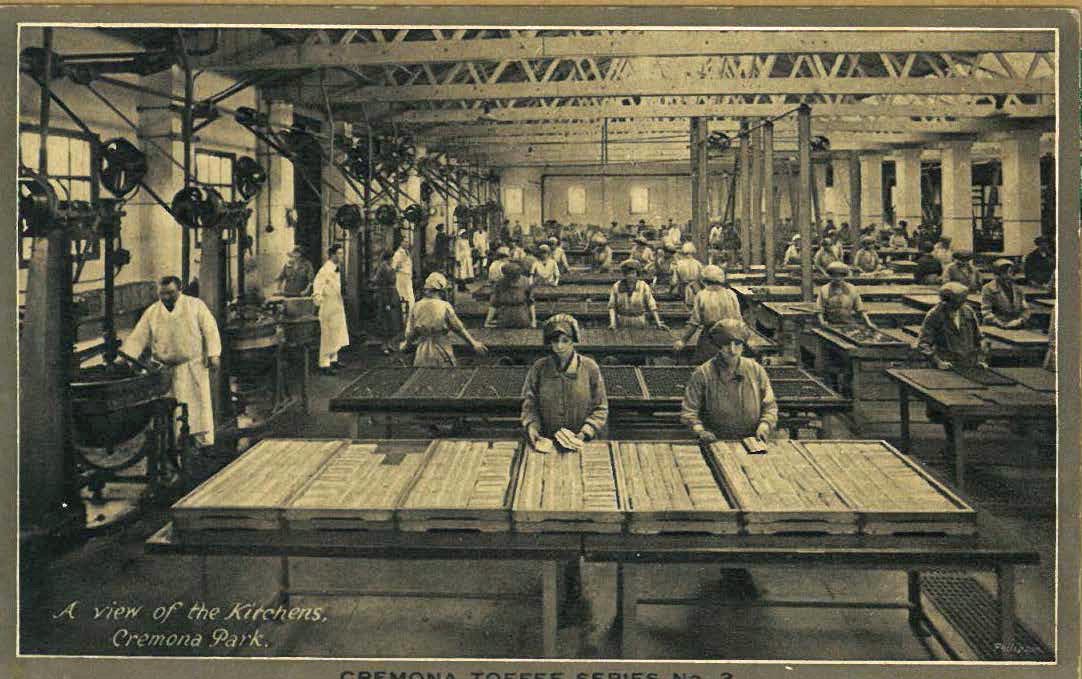

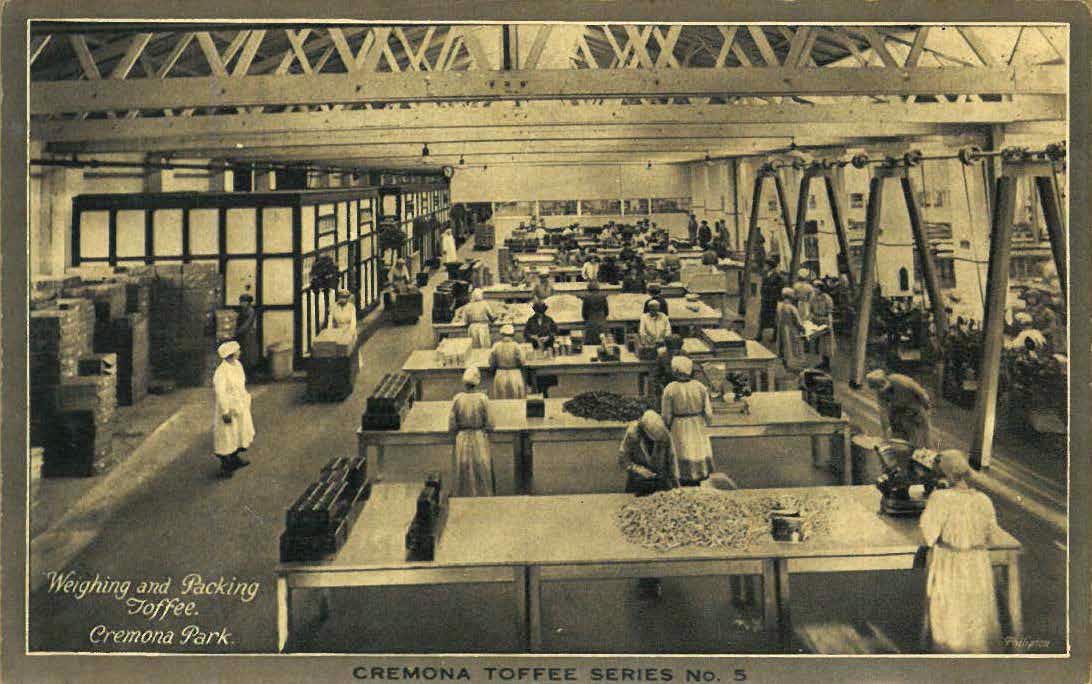

Wartime
Veronica continues: ‘We mustn’t lose sight that it was wartime and my uncle made me my very own ’Tommy gun’ which was almost as big as me. I played with the two sons of the boiler man at the factory but they were older than me and they were boys so I always had to be a ‘Jap’ and spent most of my time tied up in prison. They had an indoor shelter in their bungalow which was a great den until the siren went off one afternoon and we heard the drone of the German planes overhead. According to the grown-ups they had a different sound to our planes. We were told that the German bombers used the tall chimney of Cremona and the tall chimney next door of the Sylvan jam factory to navigate their way.
There was also a very large brick communal shelter which had slatted wooden benches where the adults sat or slept during an air raid. I slept in my pram, so I am told, but I can very definitely remember my mam running with me in my pram to the shelter and whenever it is a cold, crisp, clear night I swear I can smell the fresh, cold air there as if it were yesterday. The sound of the ‘all clear’ siren still haunts me and gives me goose-bumps.’
Even though it was wartime I was very lucky to have an uncle whose hobby was making toys-hence the doll’s house you see on one of the photographs.’
When I was almost eight, we moved to a prefab in Wallsend but still continued to go to St Teresa’s School in Heaton. When I was 11 years old we moved to a house just up Benton Rd. which was only a stone’s throw from Cremona Park and, in my teens, St George’s Methodist Church Youth Club paved the way to friendships and frequent visits to Paddy Freeman’s Park and Jesmond Dene.’
Lovely memories and photos of what must have been a very exciting place to grow up.
Update
Can you help?
If you know more about Cremona Park Toffee Factory or have memories or photos to share, we’d love to hear from you. Please either leave a reply on this website by clicking on the link immediately below the article title or email chris.jackson@heatonhistorygroup.org
Acknowledgements
Thank you to Veronica for her memories and photographs; additional research by Chris Jackson. Thank you also to Yvonne Douglas, who sent us the photos below. She said ‘My mam, Ethel Walker, born 1915, started work at Cremona toffee factory when she was 13 years old. She was too small to reach the bench she worked on so they stood her on a box. The 1st photo was taken on a break in 1931. 2nd on an outing… my mam is sitting right front’.
Sources include:
‘North East Life’, January 2010. Article by Jackie Wilkin, Albert Scholick Wilkin’s great niece.
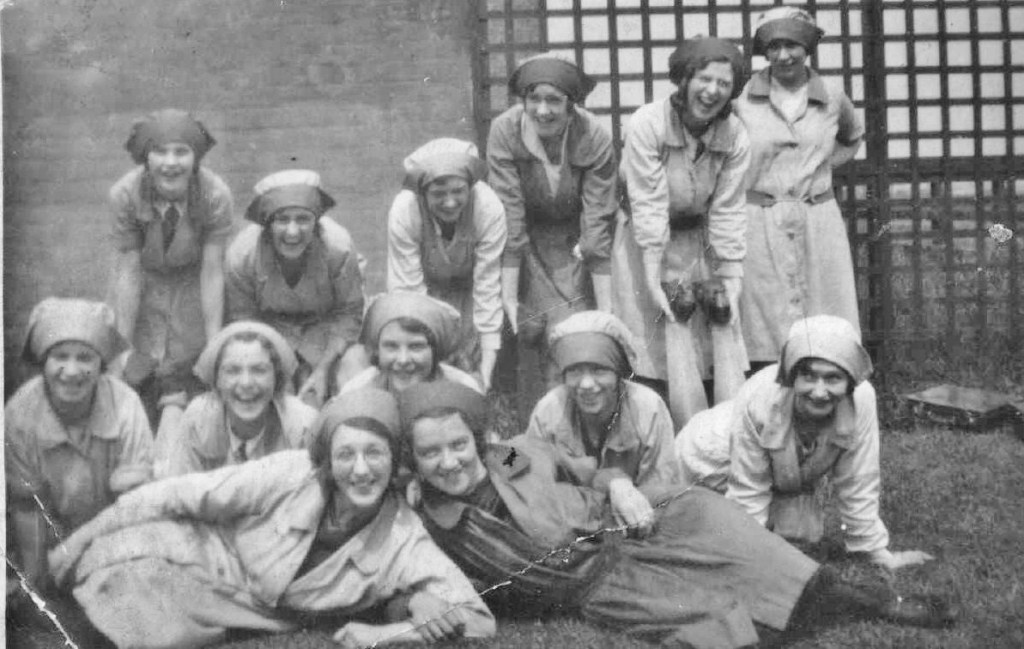
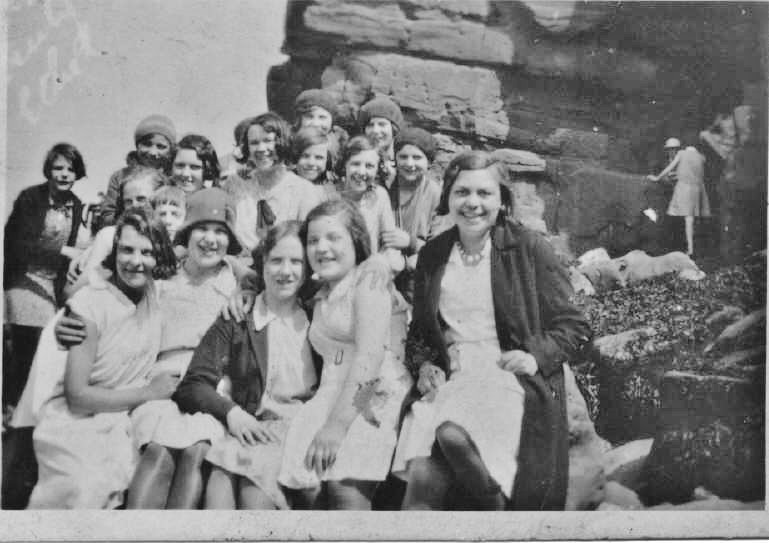

Really interesting ,well researched article ,photographs too!
Graham Coffer
Thank you, Graham!
By email from Frank Halliwell:
Re Cremona Park- I vaguely remember the trams but vividly recall the bright ,yellow Trolley buses which replaced them . My friends and I travelled to and from school- St. Theresa,s Primary school-to Cremona Park .At lunchtime we were frequently late back to school because we had waited for the open-top trolley bus.. We would clamber upstairs and loved it when the trolleys came adrift from their wires! Such a commotion! The conductor would produce a very long pole ant attempt to replace the trolley. It was to our young selves quite exciting as it produced firework –like sparks which crackled each time the trolley made contact with the electrified wires . I wonder what Health and Safety would have to say nowadays.
A history of the site post-Cremona:
https://www.chroniclelive.co.uk/news/north-east-news/sainsburys-superstore-heaton-sells-531m-19187268
I have just inherited a Cremona toffee tin, so was researching when my present me your interesting article. I wondered if you knew who took the photographs? My dad worked as a photographer for Mackintosh.
I’m afraid I don’t know who took the photographs but someone reading this might be able to help.
Sorry, meant to be “my friend sent me”!
My dad was S J Brown.